Liam H.
Jul 6, 2022
•15 minutes
Popular Mechanical Keyboard Keycap Materials: A Guide To PBT, ABS, & POM
Looking to upgrade your mechanical keyboard in style? New keycaps are the best solution, but only if you choose the right materials. Read on to learn more about PBT, ABS, and POM keycaps.
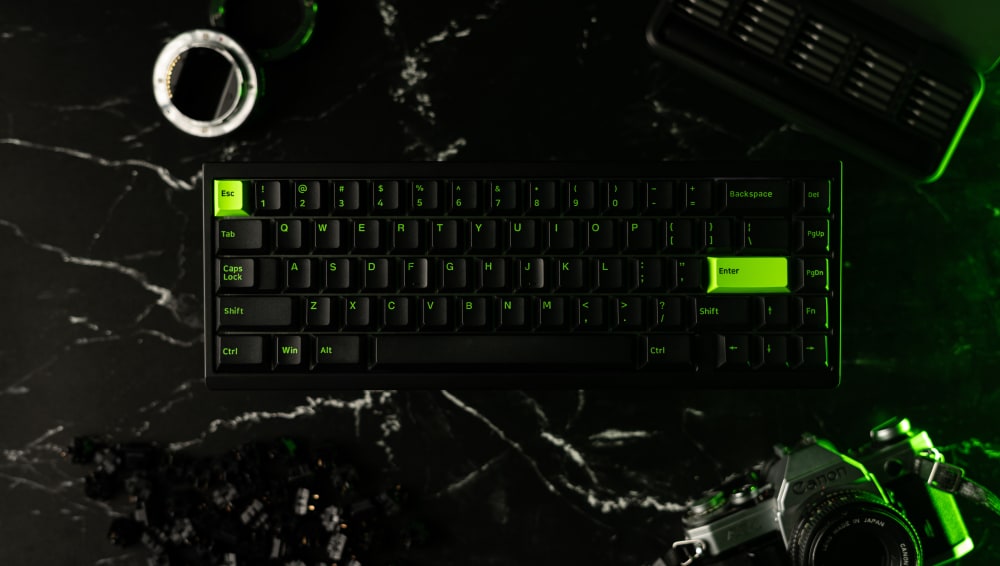

PolyCaps Code PBT Keycaps
There’s no escaping that we now live in a technology-centric universe. In fact, over 95% of U.S. households own at least one computer while virtually every modern company uses them for daily operations too. Whether using it for business or leisure, a mechanical keyboard is one of the most important peripherals. Choosing between PBT keycaps, ABS keycaps, and POM keycaps will be one of the most important decisions you'll make when building a custom keyboard.
This quick guide to PBT keycaps, ABS keycaps, and POM keycaps should answer all of your key questions to ensure that the right selection is made for your intended purpose (as well as your budget).
Why choose a mechanical keyboard?
Before looking at keycap materials, you must first ask yourself whether a mechanical keyboard is needed. A mechanical keyboard is different from a standard (membrane) keyboard because they feature a spring under the individual keys. This is a contrast to the mushy rubber found under a standard keyboard.
Mechanical keyboards have become very popular in recent times while this part of the industry is projected to see a compound annual growth rate of 13.53% over the next five years to see its overall size grow by around 150%. While they are the same style as the ‘classic’ keyboards of the 1980s, the modern quality makes them an even better product in today’s world.
A mechanical keyboard is sturdier, more responsive to keystrokes, precise, comfortable, and faster to type on. Meanwhile, individual keys can be replaced, which can save you from replacing an entire product when one breaks. As such, you may want to choose this type of computer keyboard if you are a:
- Gamer
- Copywriter or journalist
- Office worker
- Teacher
- Computer enthusiast
Mechanical keyboards come with a whole host of customizable features such as additional programmable keys and LED-lit keyboards. To unlock the very best results, choosing the right keycap materials is vital. Let’s take a closer look at PBT keycaps, ABS keycaps, and POM keycaps to learn more.
A guide to PBT, ABS, & POM mechanical keycaps
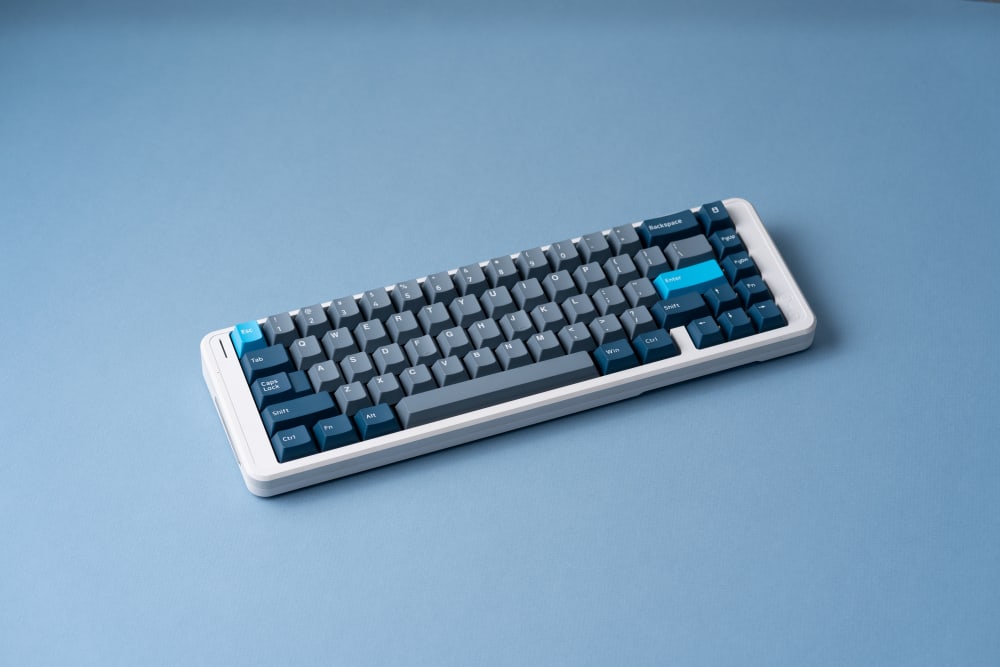

PolyCaps Whale PBT Keycaps
Mechanical keyboards boast switches for each key, which are broken into three main sections. The stem is the part underneath the keycap while the keyboard housing is what keeps all components in place. However, it’s the keycap that holds the biggest influence. Aside from their importance to the appearance of the keyboard, it provides the material that you will touch. So, it needs to feel right for your fingers.
The average American is believed to spend around two hours of each day on computers, and this figure can be multiplied several times for typists and hardcore gamers. So, which is the best keycap material - let’s take a look at the three main contenders:
PBT Keycaps
Polybutylene Terephthalate mechanical keycaps, commonly referred to as PBT keycaps, are perhaps the most sought material for typists and gamers. They are made from a PBT plastic material that is synonymous with hardness and durability, meaning that they are guaranteed to last for many years.
PBT keycaps are also known for their textured surface. While touch is a personal preference, many users find that the increased grip is ideal for fast typing and long gaming sessions alike. The manufacturing process is more complex for PBT keycaps, which is reflected in the price.
However, their features also include a far quieter keystroke delivery, which is hugely important when working in an open office. Most users consider this an advantage because they’d rather hear their music, gaming sounds, or other surroundings rather than the sound of key springs
PBT keycaps are available in several popular profiles, although many products like the Seal PBT keycaps utilize the ‘cherry’ profile style. The shape is particularly good when you plan to type for several hours at a time. Meanwhile, keycaps using the PBT materials can embrace all imprinting techniques, including the ‘double shot’ that injects the imprinting material into the mold. This prevents the risk of letters fading over time.
Nonetheless, there are fewer products on the market, which may make it a little harder to find a product that meets your specifications - unless you know where to look, They are available in conventional sizes, as well as reduced 60% and 65% keyboard sizes. They are also designed to last for several decades.
PBT keycaps pros
- They deliver far quieter keystrokes.
- Durability levels are unmatched.
- Better grip due to the finish.
- Superior legend imprinting.
- They don’t get oily and greasy easily.
PBT keycaps cons
- The materials are more expensive.
- Heavier than ABS and POM keycaps.
- Less commonly available.
- Fewer design variations (for now).
- Some people find the deeper sound to be dull.
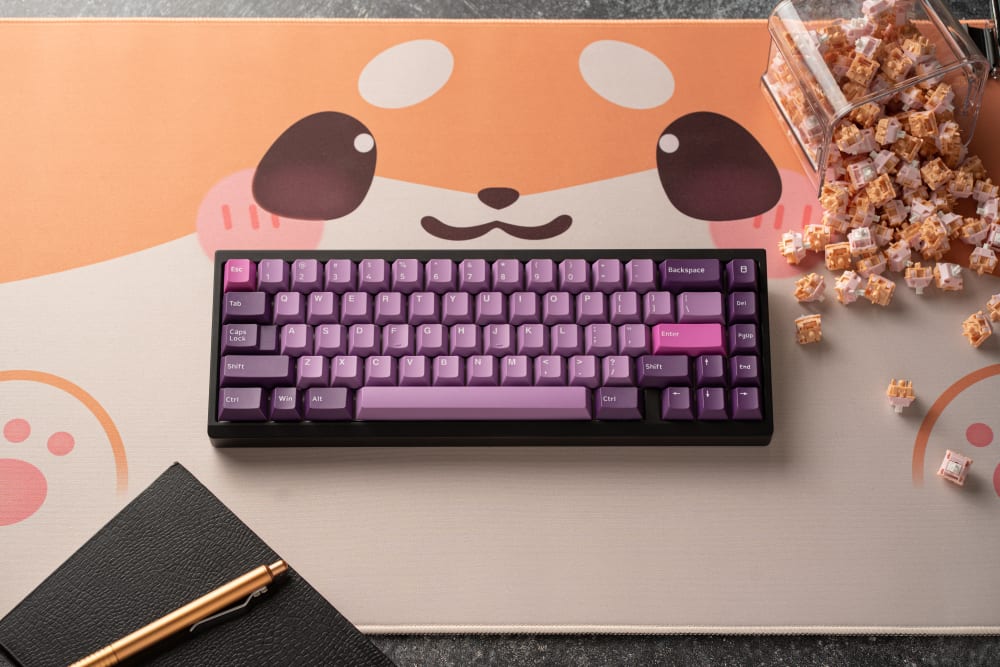

PolyCaps Octopus PBT Keycaps
ABS Keycaps
Acrylonitrile Butadiene Styrene mechanical keycaps, or ABS keycaps, are made from a polymer of three masteries. Acrylonitrile hardens the material while Butadiene provides flexibility to the material. Styrene is the core material. ABS keycaps are the most commonly found solutions that come with most non-elite mechanical gaming keyboards, as well as office keyboards.
With this in mind, you are probably familiar with many of their attributes - both good and bad. The keycaps are noticeably lighter while the smooth texture is one that most users are familiar with. Having said that, they do not match the grip provided by the grainy PBT keycaps.
ABS keycaps are also available for keyboards in several sizes. While individual keys can be stored in keycap containers, it does not stop the fact that many products use inferior imprinting techniques. It is possible for double shot to be used, but most will feel rough and fade over time.
The shiny appearance can feel like a benefit when first opening your ABS keycaps. However, they can collect grease from oily fingers or foods. Over time, this can cause a sticky touch, not to mention alter hygiene and appearances. They are readily available and in many design styles, which enables you to create a novelty look with ease. This can be useful when aesthetics are your main goal.
While ABS keycaps are not as suited to UV exposure as PBT, they still provide good reliability. They can be good for gaming setups and offices alike, especially where UV-C is used for office hygiene in the post-pandemic world.
ABS keycaps pros
- They are cheaper than PBT keycaps (GMK being the exception).
- Lighter than PBT keycaps.
- The smoother finish feels softer.
- They are easier to mold.
- The most readily available option.
ABS keycaps cons
- Keystrokes can be loud and hollow.
- They become worn far quicker.
- Prone to grease from food and fingers.
- Not as durable, particularly for gaming.
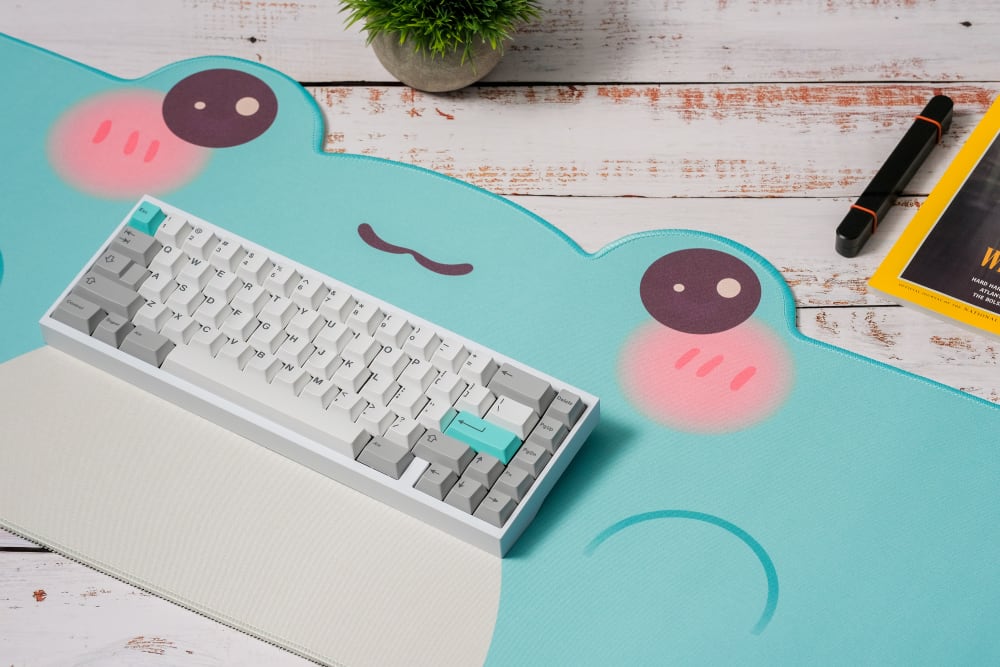

ABS Keycaps on Froggy Mat
POM mechanical keycaps
Polyoxymethylene mechanical keycaps, or POM keycaps, are another popular choice. They offer a soft yet resilient keycap solution while the material is also commonly used for switch plates, key switch housings, and keycap cases. Jelly POM designs are a particularly popular choice and can be used to create fancy designs, in fact, independent designers have created something of a community for PC owners who want to brighten up their setups.
Their smooth texture can create an almost candle-like feel while the look of individual keys is quite milky. The keys, which are naturally white in color, or normally dyed in pastel colors and other light tones. The keys are sometimes engraved while many creators do not even imprint the keys at all.
It is clear that the market is aimed primarily at home users. Casual gamers and students may find that this is a good option as their demands for fast and responsive typing are less severe than other users. The jelly POM material also lets the RGB lighting of keyboards illuminate the keyboard more powerfully.
The silicone material may be softer to touch but may also require you to press a little harder. Some users may find that keystrokes are missed from time to time. On the other hand, many users like the lack of friction from this type of keycap. The fact that many of the products on the market are small runs also brings a more unique vibe.
POM keycaps pros
- A smooth texture.
- Cheaper than PBT keycaps.
- Lighter than PBT keycaps.
- Allow RGB lights to shine strongly.
POM keycaps cons
- A smooth texture (subjective).
- Less durable.
- Can cause slower typing.
- Laser imprinting fades.
- Look less professional.
The verdict
If you frequently use a desktop computer or a laptop that is connected to an external keyboard, a mechanical keyboard is essential for the sake of comfort, performance, and durability.
While all three of the main material choices should give you an advantage over standard membrane keyboards, PBT keycaps are unquestionably the best solution on the market. For a few dollars extra, you will gain the most responsive and durable choice that can transform the look and feel of your keyboard.
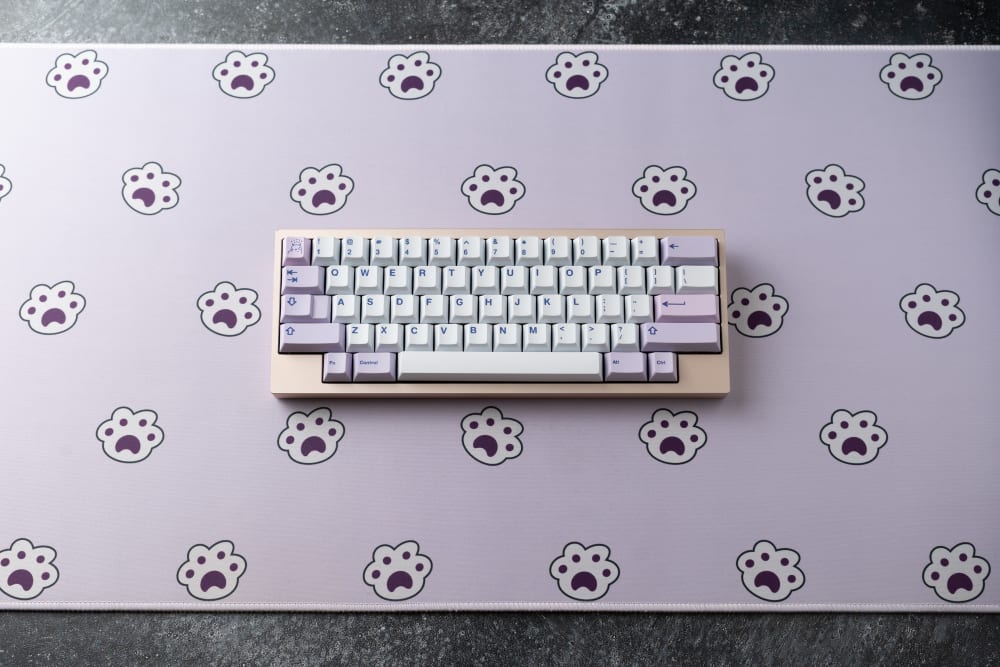

PolyCaps Hippo PBT Keycaps
When you want a mid-to-high-range mechanical keyboard to feel like a top-of-the-range product, this is the answer. Do you agree with my conclusion? Let me know!